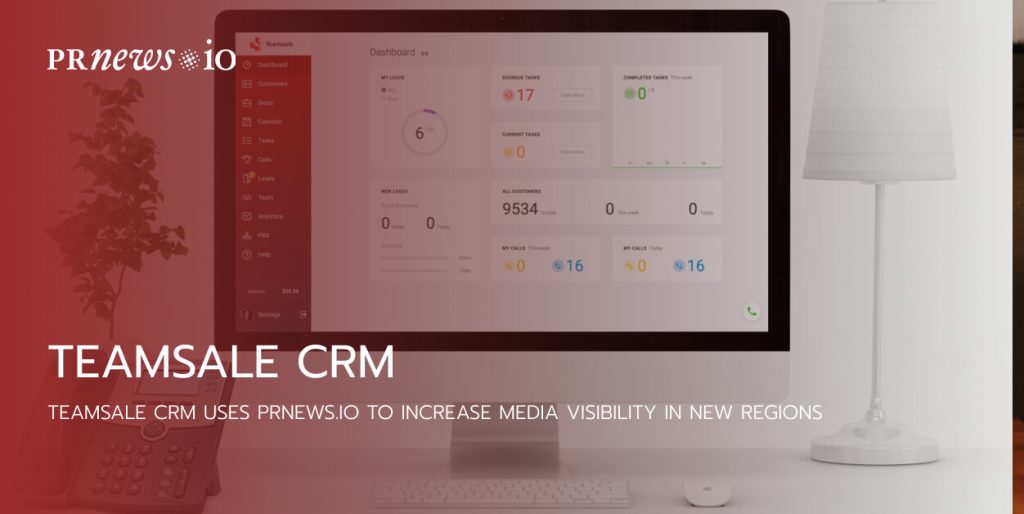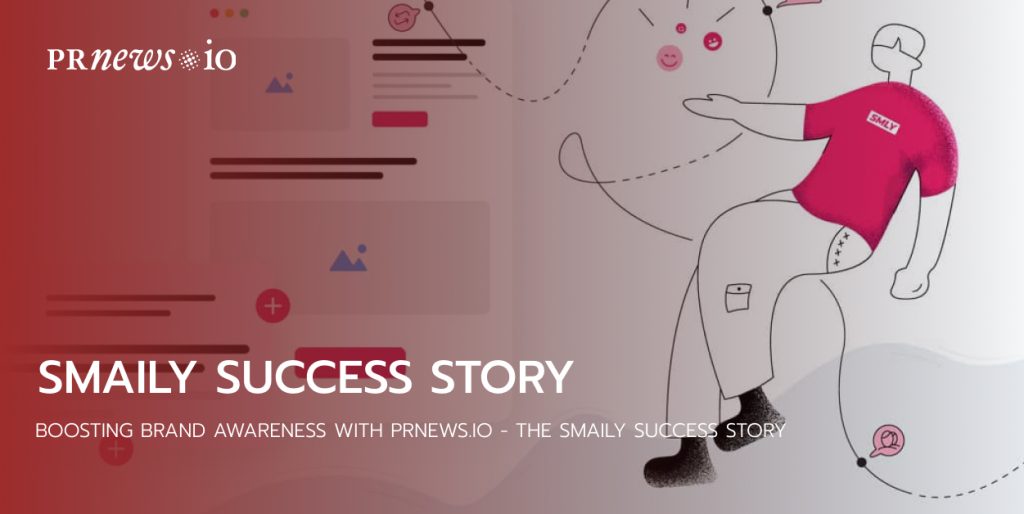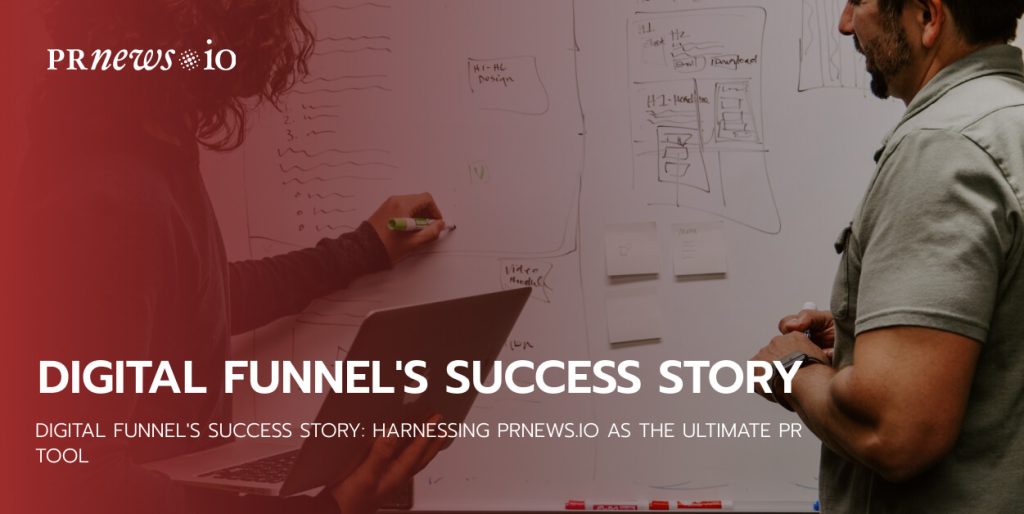
Media pitching examples. No matter what industry you’re representing, knowing how to pitch a story to the media is a crucial step to success in PR and content marketing. But sometimes securing a media coverage placement is easier said than done. With editor inboxes being full of email pitches, you need to find out how to get their attention. Check out these tangible tips and examples on how to write a media pitch.
Build Positive Online Reputation & Remove Negative from SERP
What is Media Pitch?
A media pitch is an email sent to a journalist or an editor of a major publication (newspaper, blog, magazine, or podcast), to spread awareness about your story.
Media Pitches differ from press releases and sponsored content:
- Media Pitches give the outline details of a news story or feature article and say briefly why it’s interesting to a journalist’s audience. They’re usually conversational and customized to individual journalists. Media Pitches allow journalists to describe a story in any way they like. When you pitch a reporter, you’re not negotiating about what the content will look like; you’re simply informing him about the event.
- Press releases tell the whole story and its context. They’re created in a journalistic style — third person — and in-depth enough that a reporter could write a post without asking you for more information.
- Sponsored articles mean businesses can control the content, and make sure that it aligns with business values. Sponsored content often makes use of product placement.
Types of Media Pitches
There are a variety of different types of pitch letters here and each will serve its purpose:
- initial (cold) media pitch;
- pitch with an established contact (warm);
- personalized pitch;
- follow-up pitch.
Initial (cold) media pitch
A cold pitch stands for a pitch a story to a journalist or influencer without any earlier connection. The purpose of a cold pitch is essential to convince the media person or outlet to feature a story that will presumably relate to your expertise or business, and result in media coverage. These types of press pitches are usually more challenging because you need to show both research and persuasive skill.
Pitch with an established contact (warm)
It’s a pitch that you’re sending to contacts you cooperated with before. Warm contacts are more valuable because you don’t have to introduce yourself anymore and might have already built a good reputation.
Personalized pitch
It’s a media pitch created with a personalized approach. The emails included the first name, or when the first customized sentence will get your attention more.
Follow-up pitch
Most reporters and professionals are busy people with a lot on their plate. A follow-up pitch is an email to remind a journalist about your piece of news.
Content Marketing Platform
- 100,000+ media publications;
- get backlinks to your product;
- scale work with content distribution.
Structure of a Media Pitch
Here is the basic scheme you should follow when you are creating a media pitch:
- Start with the lead. This should be the first thing a journalist sees. An attractive lead that is relevant to their interests will ensure they continue to read your pitch.
- Call-to-action. This is what you want your audience will know. It may be a product review, informing a piece of content, or announcing an interview, it’s important to make your aim here clear.
- Value proposition. This is a core part of the pitch. This is where you can present the value of what you are offering and why it is worth attention. It is crucial r stand out from the hundreds of other pitches they receive.
- Your conclusion. This is where you should repeat your call to action and thank them for their time and attention.
Guide on Creating a Media Pitch Everyone Will Read to the End
Creating an effective media pitch is not so difficult or complex. But there’s a catch… An effective media pitch has to be appealing, catchy, and captivating. You can do it successfully with some effort and experience. Or delegate media pitching without pitching. Use a credible all-in-one service PRNEWS.IO, that will create and share your stories at a fixed price for publication. With their huge experience and big team, they know how to pitch a story to the media much better.
Check out this service and come to this post to check the elements of every effective media pitch, you must have:
- Uncovered the news story in your business
- A quality press release (the guide is here) that communicates your story
- The list of contacts you want to send your media pitches
- An all-inclusive PR plan to show you’re not a one-hit-wonder
Now that you know the checkpoints you want to pitch and to whom you want to send them, it’s time to start creating it. Here’s how:
- Direct your media pitch to specific bloggers, journalists, or influencers, if you can find it. Make small research. A pitch sent to the relevant person will get more productivity than including the wrong name or a generic “To Whom It May Concern.”
- Follow the media platform guides. If the newspaper has submission rules, be sure to follow them. It doesn’t matter how original your content is, if you don’t address your submission correctly, it will get ignored.
- Personalize Your Pitch. Show that you constantly read and know its content very well. Prove you have an understanding of the media source’s audience as well as what stories are most popular and shared.
- Focus on what you have to offer. Too many authors write what’s so great about them, but media sources would rather publish how you can help them. Remember, media business needs news and stories, so pitch that, not your business.
- Make the media source’s job simple. The less work the journalist has to do with your piece of information, the better. Make sure to insert any important facts along with credible sources.
- Be interesting and engaging. Demonstrating your expertise, don’t be boring.
- Put a Great Hook. Bloggers and producers prefer reading new content on topics they write about regularly. They pay attention to email pitches that have relevant news pegs. If you can show a connection of your content to a big news story or their recently published post, it can work wonders.
- Be brief and to the point. Producers don’t like spending time reading long pitches. Any of such novels are more likely to be ignored.
- Leave your contacts. Although your email will show up as the address the journalist can reply to, leave your email address, website, social media links, or phone number anyway.
- Format your pitch. It’s better not to be original and use text (not HTML), basic font, and formatting to avoid a disorganized look.
- Address your pitch to only one journalist at a media source. Sending your idea to every journalist in one newspaper will annoy the journalists. Usually, these people work together, so they spammed them all. With that said, you can send a similar pitch to different media sources at the same time.
- Follow up. This is where many people lose great PR and publicity opportunities. If journalists like your content, they might respond right away, but often, your email is saved but not replied to. Media workers are extremely busy, so it’s up to you to send a follow-up email. The trick is to do it naturally. Wait two weeks or so, and then send a follow-up email asking if they read the pitch and if they need more details. It will be more effective to call them, but again, be quick and brief on the phone. No matter what you choose, only follow up on your pitch once. Instead, you can inform about a piece of completely different information.
Examples of Effective Media Pitches
Example #1: cold pitch
Journalists and producers receive many pitches per day, which means they can miss many of them. What can make your media pitch more noticeable? You can achieve it by providing them with some unique and valuable information. And one of the best ways to add value is by giving the person you’re trying to reach out to (e.g. journalist, influencer, blogger) something they can’t find elsewhere.
To avoid the delete button or trash can, look at this example:

Example #2: pitch for established сontacts
In this example, you see a “personalized conversation starter” to get build your rapport and get the relationship going. Here is something “personal” to talk about in that first email. Even if the journalist doesn’t immediately recognize your name, you can refer to the previous mutual experience in the email.

Example #3: the “Results”
The idea with this media pitch is simple: showcase that you follow an influencer’s advice and share your results with them. If you have interesting discoveries from following a specific influencer’s tip, use that in the subject line when pitching this blogger or influencer, e.g. “Lost 20lbs with your diet!”
Here’s how you can do it:

The idea of such an email is to refer to the journalist’s recent post, then use it to plug your product pitch. Write your opinion about this story to make the email sound more authentic.
Here’s an example:

The first paragraph is completely personalized.
The second paragraph, however, only has little personalization.
Also, note that the email doesn’t end with a big request. It has just a small polite question if they want to know more.
Example #5: the “exclusive research” email (It fits great to the cold media pitches)
Exclusive research and data are a great way to get press. Not only do journalists love it, but it’s also more difficult to distinguish you from the spammers. Here’s an example of addressing these types of emails:

Example #6: the story pitch
So you found a top journalist publicly asking about a topic on Twitter or other social media platforms. Look how you can use it in your media pitch to make it more personalized:

This email is based on a specific tweet (or any other post, published on different social media channels).
To use this:
- Refer to their request on the post in the first line. It appeals to their attention and tells them that you have something relevant to share.
- Share your story. For this to work, tell a) what you did, and b) what you got. Be as concise as possible. Make sure to include humorous details (here, “sleeping in a car” and “$100k lifeline”) to get them interested.
Media pitching examples #7: follow-up pitch

You see that this e-mail is short and polite. You can feel, that the author respects the fact that a journalist may not be interested in this topic.
Stay concise and to the point like in this example. Keeping the above point in mind, politely re-ask if they’re interested or if you can provide any other details about this piece of news.
Media pitching example #8: pitch focused on benefits
*example provided by Daniel Louwrens, founder and CEO of Muscle and Brawn
A benefits-focused pitch highlights one or more ways a media outlet can benefit from doing a story about a company. This pitch strategy aims to persuade media people about the value of your story and how it can compete with other media pitch ideas.
Example:
Hi Dave Stone,
Baylor Plant Nursery has just expanded its product line to include fruit trees, edible shrubs, vegetables, and flowers so that anyone can grow their own food at home.
We’d love to do a story for your urban garden magazine to show new gardeners that fruits and vegetables can be grown in even the smallest spaces. Send me your details, and I’ll be happy to provide you with four fruit bushes, five heat-tolerant lettuce varieties, two squashes, two peppers, and two tomato plants, plus containers, potting soil, gardening supplies, and anything else that you need to role-play the perfect little vegetable patch.
Hopefully, this answer is helpful to you. You can contact me at the same email address for any follow-up questions. Also, feel free to modify or edit the answer to support your publishing requirements.
Media pitching example #9: added value pitch
*example provided by Miranda Bence, CEO, and founder of the Cherry Picks Reviews
Marketers and PR professionals use a value-added pitching strategy when they believe they have a company story, news, product, or service that could add value to one or more stories that a media outlet has already published. The key point is that your niche should be relevant to the other website’s content.
Example:
Hi Kim Smith,
I read your recent newspaper article about job opportunities for high school dropouts and wanted to discuss a different story that could perfectly match the topic!
Our people’s business has just started a new program where we work with charities and local community centers to help high school dropouts discover their interests and fulfill their career dreams. Let me know if I can provide any additional information.
Media pitching example #10
*example provided by Max Shak from SurvivalGearShack.com:
Hi (Recipient’s name),
The reason I’m contacting you is that I believe I have the perfect story for your publication. [Insert story headline].
In case you’re interested in knowing more, here are a few details: [insert one or two sentences about the story]. Please let me know if you are interested in receiving the full press release.
Do you think this is something you’d be interested in covering? I would be glad to answer any questions you might have.
I appreciate you taking the time to read this, thank you
(Your name)
Media pitching example #11: public relations speech for an organization
*example provided by Steve Rose, Vice President at MoneyTransfers
A company announcement pitch is an attempt to get the attention of regional, national, and international media outlets about some important company news. New employees, possibilities for growth, product launches, feature enhancements, and charity and brand collaborations are all examples of things a firm might announce. When promoting a new policy, hire, or announcement, it’s important to talk about how good it will be for clients and the neighborhood as a whole.
Example:
What’s up, Kimmel?
To meet the growing demand for our vegetarian and vegan food, Floral Veg is expanding the ground-level terrace and opening a rooftop restaurant and bar in the summer of 2022. Whoever reads your blog enjoys downtown dining as much as I do, and I think this could be an interesting topic to share with them.
Don’t hesitate to call me up and set up a time for us to talk.
Gratitude to you,
Please provide me with your full name, phone number, and email address.
Media pitching example #12: media pitch that doesn’t warm you up
*example provided by Jeff Colt, the founder of AquariumFishCity
A cold media pitch is a media pitch method in which a marketer sends a media pitch to a news organization without first making contact with anyone there. You need to introduce yourself and your business, as well as explain why you think they should cover the issue you’ve suggested. As this initial contact may lead to further collaboration, it is crucial that the media understand who the company is and how it is related to the publication.
Example:
Pardon my interrupting you, Smith.
A little bit about me: I’m Jordan Berwick, and I’m the public relations coordinator at Baker Real Estate in sunny Virginia. We now serve northern Virginia but are hoping to expand our services to southern Maryland so that we may better assist homeowners in their search for affordable housing.
We believe that a mention of our services might be of great use to your readers and their real estate needs, as our publication is focused on southern living and making the most of the DMV area.
Please get in touch whenever it’s convenient for you.
Media pitching example #13: proposal with extra value
*example provided by Tom Miller, Chief Marketing Officer (CMO) at FitnessVolt
In situations where they believe they have a company narrative, news item, product, or service that could add value to one or more articles already published by a media outlet, marketing and public relations professionals will adopt the added-value pitch method. Investigating the media outlet’s back issues can help you figure out what kinds of content they often publish, which is helpful when thinking up an added-value pitch. Give an example of a story or a project you’re working on, and explain how the company’s news fits into that context.
Example:
Hello, Johnny
After reading the recent article in your publication about the job market for people who dropped out of high school, I felt compelled to contact you about an idea for a story that would go well with what you were already writing about.
Our staffing company has started a new program with the help of local nonprofits and community groups to encourage high school dropouts to follow their passions and reach their full professional potential.
Just let me know if there’s anything else I can do to help.
Read more: Tips for Writing an Effective Email Pitch
How To Do Public Relations For Small Business
How to use PRNEWS.io
In this video, I share a great tool called PRNEWS.IO – a marketplace where PR specialists, internet marketers, and advertisers can buy sponsored content. PR is great for visibility, business growth, and SEO backlinks (it can help you rank in Google)
Media Pitching Tips from Industry Experts
Jason Farr, the President and Owner of Aviara Pavers
Follow-through
I believe this is a vital but sometimes overlooked stage. Wait for a response to your media pitch or schedule a follow-up many days later. Follow-up is where much of the magic occurs. Rarely do you receive an immediate reply. According to a published study, sending a follow-up email doubles your odds of receiving a response. 50% of closings specifically occur after the fifth contact. The majority of reporters and professionals have a full schedule. So it is normal for them to have missed your initial email pitch. Sending a follow-up email to a recipient can propel you to the top of their inbox.
Jamie Irwin, Digital Marketing Expert at TutorCruncher
Benefit-driven sales pitch
I would suggest that a benefits-oriented pitch emphasises one or more areas in which a media outlet might gain from covering a firm. This pitch technique intends to convince media workers of the worth of their narrative and how it may compete with other media pitch concepts. This sort of pitch may contain extra information regarding the nature and subject of the targeted media article, as well as how it would benefit both sides. You may also provide media persons a free trial of a product so they can experience its benefits for themselves. We would love to write an article for your urban gardening magazine to educate novice gardeners that they can cultivate fruits and vegetables in even the tiniest of places. Send me your contact information, and I will gladly provide you with four fruit shrubs, five heat-tolerant lettuce varieties, two squash, two cucumber, two pepper, and two tomato plants, as well as containers, potting soil, gardening supplies, and anything else you may need to create the ideal small vegetable garden.
Travis Lindemoen, Managing Director of Nexus IT Group
The “You’ve Missed This One” Pitch
What to Say Instead of “You Missed This One” is, in my opinion, a fantastic example of a media pitch. If you want bloggers and industry journalists to include your product or service in their list posts and comparison guides, this is the way to go about it. Detailed instructions are provided below. One of the first steps is to compile a list of the various ways your product is described. Let’s pretend, for the sake of argument, that you run a web-based corporate training application that allows users to develop and market their own online training programs.
Gerrid Smith, Director of E-commerce of Joy Organics
The “Thanks” Pitch
The Ask for Assistance and Gratitude Pitch is, in my opinion, the most effective media pitching example. In the end, we all want want to feel appreciated. Everyone wants to feel like they made a difference by encouraging another person to take action or solving a problem they were facing. This is why it’s important to contact out and express gratitude for the assistance you’ve received. It’s one thing to read an email, and quite another to respond to it. However, if your goal is to network with media professionals such as writers and bloggers, this method of pitching is ideal.
Robert Warner, Official Member of Forbes Agency Council and Head of Marketing at VirtualValley
The Sales Pitch That’s “Just for You”
The Sales Pitch That’s “Just for You” is, in my opinion, the most interesting case of media pitching. Due to the potent influence of the psychological concept known as “fear of missing out,” many people are eager to gain access to previously unavailable data. You can use this type of media pitch to get the word out about your new product or service when you have exclusive information about it (like a product launch, for example).
Steve Elliott, Franchise Owner of Restoration1
Follow Up Pitches.
Follow-up Pitches are, in my opinion, a natural indication of effective public relations. It involves sending follow-up e-mails to your first pitch in order to determine its progress. It’s what keeps everyone apprised of what’s been done and what’s required. Additionally, it reinforces the vital interaction between a publicist and PR. No surprise that more than 90 percent of PR professionals prefer to communicate with journalists via email. 64% of journalists agree with this statement.
Tom Miller, a Registered Dietitian & Nutritionist RDN at FitnessVolt
Invest in relationships
In my perspective, public relations is extremely individualistic. You don’t merely call press contacts whenever you have a need for their services. Instead, you want to focus on cultivating long-term connections with these individuals. It’s a lot like being in sales, in a way. You have to take into consideration what the end users’ needs are (in this case, journalists), cultivate your connection with them, and then, at the appropriate moment, deliver them a customised pitch. You need these three things in order to create a pitch that will make a journalist’s eyes light up as children’s eyes do when they open presents: A perspective that piques their interest and makes them curious. A subject line that is captivating to the reader. A concise and clear email that provides them with value right away.
Newsjacking
According to me, newsjacking is when you take advantage of a major news event and relate it to the product you are selling. It is now considered a basic play in public relations. Although established, well-known companies frequently adopt this strategy, smaller companies may find success with it just as easily. Targeting news sites that only cover the story incidentally is the most important step in making this strategy successful. You shouldn’t contact People magazine, for example, if you’re writing an article about what entrepreneurs can learn from the most recent Kardashian incident. Instead, you should contact Forbes.
Make sure you’re pitching relevant media contacts
In my view, prior to drafting your media pitch, you should first discover relevant media contacts in order to construct a media list, which is a list of individuals who may be interested in covering your story. In other words, a media list is a list of people who might be interested in reporting your story. Individual journalists each have their own areas of expertise, which are collectively referred to as a “beat” in the industry. It is preferable not to send your pitch to the general email address of a news publication but rather to address it to the individual in the news organization who is most relevant to the topic that you are writing about. In other words, before you start knocking on doors, you need to be sure you’re knocking on the appropriate doors.
Kenny Kline, President & Financial Lead at BarBend
Always target the right beat
According to me, the term “beat” refers to the region of coverage that a journalist concentrates on. These might be either large or small in scope. Publications that are tailored to an industry typically cover particular beats. For example, Recode.net has individual editors for topics such as robots, social media, artificial intelligence, business, and more. On the other hand, publications such as Huffington Post or The New York Times will have a single editor responsible for covering a large beat (such as “politics”). Targeting the appropriate beat is necessary for these tactics to be successful. You shouldn’t email an editor who solely covers e-commerce a piece about your artificial intelligence firm. Because of the fragmented structure of news desks in today’s mediaorganisations, there is a considerable probability that your proposal will never be sent on to the appropriate editor. According to the results of a poll conducted by Fractl, sixty percent of writers want the subject lines of their pitch emails to correspond with their beats.
Robert Zeglinski, Managing Editor & Researcher at BreakingMuscle
Media Pitching
Consider the chance that a reporter will not be interested in your story. That is the recommendation I would make. Remind them of the last point, and then politely inquire whether they are interested in the position or if you can provide additional information. If you receive a positive response, be prepared to submit any more information they may request and have a flexible schedule in case they wish to interview you for more information.
Bottom Line: Media Pitching Examples
While mastering the art of pitching won’t happen in one day, these tips and examples can help you reach the people you need. Being one of the critical parts of PR, effective media pitches is core to the execution of a successful PR strategy and should not be neglected. It’s up to you to get your client quality media post, so get started.
Now that you have clear instructions on how to write a media pitch, it’s your turn to make them your own. Have you ever tried to address a media pitch to a journalist or influencer? If so, what were the tactics you used? What worked and what didn’t? Let me know by leaving a comment below.





